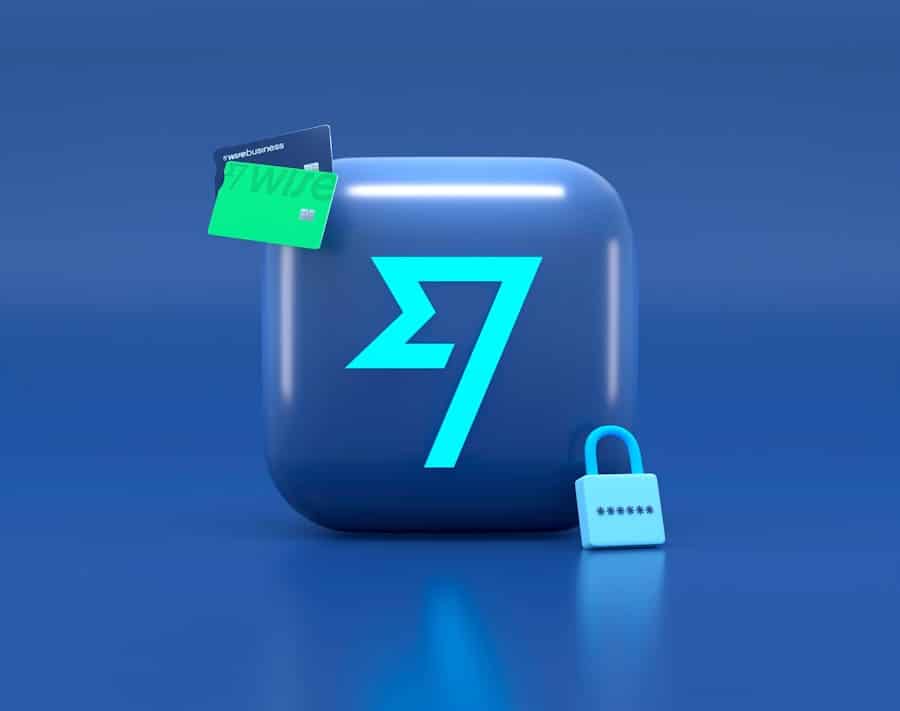Public Wi-Fi networks have become ubiquitous in our daily lives, offering convenience and connectivity in cafes, airports, libraries, and other public spaces. However, the very nature of these networks poses significant security risks. When you connect to a public Wi-Fi network, your data is often transmitted over an unsecured connection, making it vulnerable to interception by malicious actors.
This means that sensitive information such as passwords, credit card numbers, and personal messages can be easily captured by anyone with the right tools and knowledge. The risk is particularly pronounced in environments where many users are connected simultaneously, as the sheer volume of data being transmitted can create opportunities for cybercriminals to exploit. Moreover, the lack of encryption on many public Wi-Fi networks means that users are often unaware of the potential dangers lurking in the background.
Attackers can employ techniques such as “man-in-the-middle” attacks, where they intercept communications between a user and the intended server. This allows them to eavesdrop on conversations or even alter the data being sent. Additionally, rogue hotspots can be set up by cybercriminals to mimic legitimate networks, tricking unsuspecting users into connecting.
Once connected, these attackers can gain access to a wealth of personal information. Understanding these risks is crucial for anyone who frequently uses public Wi-Fi, as it lays the groundwork for implementing effective security measures.
Key Takeaways
- Public Wi-Fi networks pose security risks such as data interception and malware attacks
- Using a VPN can provide a secure and encrypted connection to protect sensitive information
- Two-factor authentication adds an extra layer of security when accessing accounts on public Wi-Fi
- Avoid accessing sensitive information such as banking or personal data when connected to public Wi-Fi
- Keep devices updated and secure to prevent vulnerabilities and potential security breaches
Using a Virtual Private Network (VPN) for Secure Connections
One of the most effective ways to secure your connection when using public Wi-Fi is by utilizing a Virtual Private Network (VPN). A VPN creates an encrypted tunnel between your device and the internet, ensuring that all data transmitted is secure from prying eyes. This encryption makes it significantly more difficult for hackers to intercept your data, even on unsecured networks.
When you connect to a VPN, your internet traffic is routed through a secure server, which masks your IP address and provides an additional layer of anonymity. This is particularly beneficial when accessing sensitive information or conducting financial transactions over public Wi-Fi. In addition to encryption, many VPN services offer features such as kill switches and DNS leak protection.
A kill switch automatically disconnects your internet connection if the VPN fails, preventing any unencrypted data from being exposed. DNS leak protection ensures that your DNS queries are routed through the VPN, further safeguarding your browsing activity from potential exposure. With numerous VPN providers available, it’s essential to choose one that has a solid reputation for security and privacy.
Look for services that do not log user activity and offer strong encryption protocols like OpenVPN or WireGuard. By incorporating a VPN into your routine when using public Wi-Fi, you significantly reduce the risk of data breaches and enhance your overall online security.
Enabling Two-Factor Authentication for Added Security

Two-factor authentication (2FA) is an essential security measure that adds an extra layer of protection to your online accounts. By requiring two forms of verification before granting access, 2FA makes it much more difficult for unauthorized users to gain entry, even if they have obtained your password. The first factor is typically something you know—your password—while the second factor can be something you have, such as a smartphone app that generates a time-sensitive code or a text message sent to your phone.
This dual-layer approach is particularly important when accessing accounts over public Wi-Fi, where the risk of interception is heightened. Implementing 2FA across all your accounts can significantly mitigate the risks associated with using public networks. For instance, if a hacker manages to capture your password while you are connected to an unsecured Wi-Fi network, they would still need access to your second factor of authentication to log in successfully.
It’s advisable to enable this feature wherever possible, as it serves as a robust deterrent against unauthorized access. Additionally, consider using authentication apps like Google Authenticator or Authy instead of SMS-based verification, as these apps are generally more secure against interception.
Avoiding Accessing Sensitive Information on Public Wi-Fi
When using public Wi-Fi networks, it is prudent to avoid accessing sensitive information altogether whenever possible.
The inherent risks associated with public networks make it unwise to engage in activities that could expose sensitive data.
Instead, consider using mobile data for transactions that require heightened security or wait until you are on a secure network before accessing such information. If you must access sensitive information while on public Wi-Fi, take additional precautions to minimize risk. For example, ensure that you are using a VPN to encrypt your connection and consider accessing websites that offer additional layers of security, such as those with two-factor authentication enabled.
Furthermore, be mindful of the information you share on social media or other platforms while connected to public networks; even seemingly innocuous posts can provide valuable insights to potential attackers about your habits and routines.
Updating and Securing Your Devices Before Connecting to Public Wi-Fi
Before connecting to any public Wi-Fi network, it is crucial to ensure that your devices are updated and secured. Software updates often include important security patches that protect against known vulnerabilities exploited by cybercriminals. Regularly updating your operating system, applications, and antivirus software helps safeguard your devices from potential threats.
Many devices have settings that allow for automatic updates; enabling this feature can help ensure that you are always protected with the latest security enhancements. In addition to keeping software up-to-date, consider implementing strong security settings on your devices. This includes enabling firewalls and ensuring that your antivirus software is active and regularly scanning for threats.
Disabling file sharing and turning off network discovery can also help protect your device from unauthorized access when connected to public networks. By taking these proactive steps before connecting to public Wi-Fi, you create a more secure environment for your online activities.
Using HTTPS and SSL/TLS for Secure Browsing

When browsing the internet over public Wi-Fi, it is essential to prioritize secure connections by looking for HTTPS in the URL of websites you visit. HTTPS (Hypertext Transfer Protocol Secure) indicates that the website uses SSL/TLS (Secure Sockets Layer/Transport Layer Security) protocols to encrypt data transmitted between your browser and the server. This encryption helps protect sensitive information from being intercepted during transmission.
Many modern browsers also display a padlock icon in the address bar when a site is secured with HTTPS, providing an additional visual cue for users. While HTTPS significantly enhances security during online transactions and communications, it is important to note that not all websites implement this protocol. Therefore, always check for HTTPS before entering any personal information or making purchases online.
Additionally, consider using browser extensions like HTTPS Everywhere, which automatically redirects you to the secure version of websites whenever available. By making a habit of prioritizing HTTPS connections while using public Wi-Fi, you can greatly reduce the risk of data interception and enhance your overall online safety.
Being Cautious of Fake Wi-Fi Networks and Hotspots
The proliferation of public Wi-Fi has led to an increase in fake networks designed to deceive unsuspecting users. Cybercriminals often set up rogue hotspots with names similar to legitimate networks in order to lure individuals into connecting. For example, a café might offer free Wi-Fi under the name “Cafe_WiFi,” while an attacker could create a hotspot named “Cafe_WiFi_Free” or “Cafe_WiFi_Guest.” Once connected to these fake networks, users may unknowingly expose their data to attackers who can monitor their online activities or steal sensitive information.
To avoid falling victim to these deceptive tactics, always verify the name of the network before connecting. If you are unsure whether a network is legitimate, ask staff members at the establishment for confirmation. Additionally, consider disabling automatic connections to open networks on your devices; this prevents your device from connecting without your explicit permission.
By remaining vigilant and cautious about which networks you connect to while in public spaces, you can significantly reduce the risk of falling prey to fake Wi-Fi hotspots.
Regularly Monitoring Your Accounts for Suspicious Activity
Even with all precautions taken while using public Wi-Fi networks, it remains essential to regularly monitor your online accounts for any signs of suspicious activity. Cybercriminals may still find ways to compromise accounts despite best efforts at securing connections and devices. Regularly checking bank statements, credit card transactions, and account activity can help identify unauthorized transactions or changes made without your consent.
Many financial institutions offer alerts for unusual activity; enabling these notifications can provide an additional layer of security by keeping you informed in real-time. In addition to monitoring financial accounts, keep an eye on social media profiles and email accounts for any signs of unauthorized access or changes made without your knowledge. If you notice anything unusual—such as unfamiliar login locations or changes in account settings—take immediate action by changing passwords and enabling two-factor authentication if not already in place.
By maintaining vigilance over your accounts and promptly addressing any suspicious activity, you can better protect yourself against potential threats stemming from public Wi-Fi usage.
When it comes to securing your data on public Wi-Fi networks, it’s crucial to stay informed about the latest technology that can enhance your online safety. One such device that can aid in maintaining security while on the go is the Samsung Galaxy Chromebook 2 360. This versatile Chromebook offers robust features that can help protect your data, such as built-in security measures and regular updates. For more information on how this device can open up a new world of possibilities while keeping your data secure, check out this related article:


